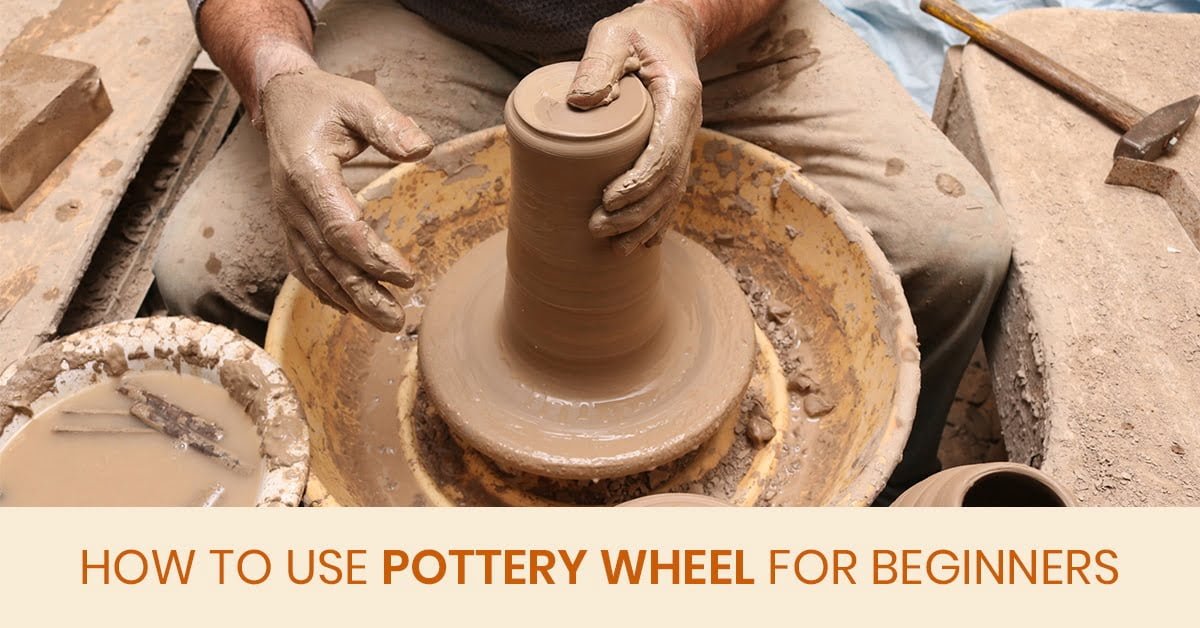

How to use Pottery Wheel For Beginners
Using the Pottery Wheel is a key skill to master when creating your piece of pottery. From decorative vases to dinnerware set, the pottery you can create is many and varied.
In this article, we look at how to use a potter’s wheel for beginners. Our goal is to help you learn how to make pottery perfectly.

How to use a Pottery Wheel : step by step
A key part of successfully using your own pottery wheel is careful preparation.
Step 1: Preparing the Pottery Wheel
Spin the wheel and lightly dampen the center of the pottery wheel with your sponge.
2nd step: Preparing the clay
Place your clay in the shape of a gumball in the center of the pottery wheel bat and start flattening it with the palm of your hand while turning the wheel manually.
Step 3: Manipulating the clay
Once the clay is firmly in place, put some water on your hands and increase the speed of the wheel. Before you start manipulating the clay, make sure your elbows are locked into your legs.
Step 4: Coning up
This is the Coning up stage, where the potter uses his left hand to push the clay up, use his right hand as a support and his palms to press the clay inward.
Step 5: Drilling
To make the opening of your plate or vase, the next step is drilling.
Step 6 : At this point, you will begin to form the size and shape of your pottery piece.
Step 7 : Once you are happy with the desired shape, you can remove your pottery from the pottery wheel, place a taut wire on the other side of your piece and slowly slide it towards you.

Choosing Potter’s Wheel for Beginners
Among the factors that should be taken into consideration when choosing a pottery wheel are the following:
- Space available: If you don’t have a lot of space in your pottery studio, it’s important to consider the size of a potter’s wheel to purchase.
- Weight of pottery wheel: If you have to move your pottery wheel daily, its weight is an important factor to consider.
- The turning capacity (in kg) indicates the mass of material supported by the Potter’s Wheel. For professional use, opt for pottery wheels with a turning capacity of around 25 kg.
- The sound level of the potter’s wheel (in decibels (db)) is a real criterion of comfort for potters who turn for several hours in potters’ workshops. It indicates the noise to which the potter is subjected when using the machine. The noise of most Pottery Wheels varies between 30 and 60Db.
An Electric Pottery Wheel or Kick Wheel
Motorized wheels can be powered up with the flip of a switch. Kicker wheels require you to use your foot to set the concrete flywheel in motion to spin the wheel.
The strong point of kick wheels is that they are durable and require very little maintenance.


How much does a Pottery wheels cost?
To purchase a potter’s wheel, expect to pay between $600 and $900.
What accessories do you need with a pottery wheel?
Although most pottery shaping is done with potter’s hands, you will need a few accessories that pottery beginners should get, such as:
- Needle Tool: Ideal for pricking air bubbles and making fine cuts.
- Wooden Knife: It Has a sharp end for cleaning and another rounded end for smoothing.
- Sponges: used to smooth the clay.
- Ribs – Helps shape vases and pots by creating curves.
- Wire Tool – Used to cut projects from the wheel head.
- Splash Pan : A splash pan is a two-piece tub that locks around the wheel. It catches excess water that blows off the wheel as you work. This way, you won’t have to clean up gray water splashes all over your studio space.

Conclusion:
Learning how to use a pottery wheel is a matter of practice. Your first effort may not be perfect, but the more time and patience you use, the more successful you will be.
Following the steps above is a great start and having the right equipment in place ensures a consistent finished product.
Recherche
Derniers Articles


How to use Pottery Wheel For Beginners

Learn how to make Pottery in 10 minutes
Suivez nous



